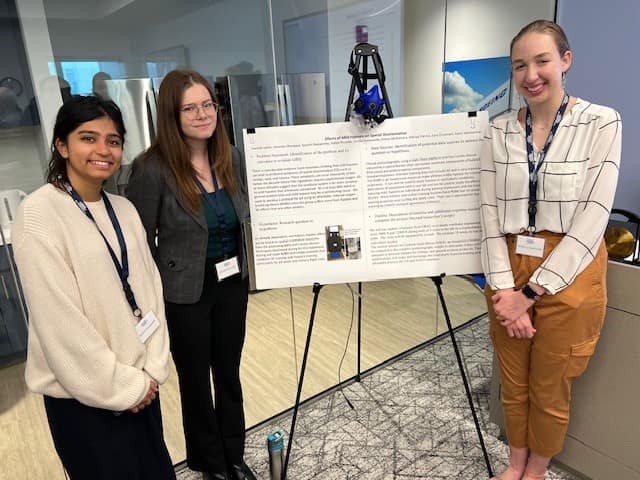Researchers Showcase Aviation Safety Strategies

More than 40 students and nearly a dozen faculty members presented aviation safety-related research Jan. 18 at Embry-Riddle Aeronautical University’s Daytona Beach, Florida, campus.
Presentations included studies of hypoxia, pilot fatigue, wearable robotic devices, a drone-based approach for monitoring wildlife near airports, a more user-friendly or “explainable” artificial intelligence approach to enhancing aviation safety, and much more.
The open house event showcased The Boeing Center for Aviation & Aerospace Safety’s new facility — a completely reimagined and remodeled version of a former fitness building.
“Having this space is going to propel the center to new heights,” said Executive Director Robert Sumwalt, who chaired the National Transportation Safety Board (NTSB) before joining Embry-Riddle in 2021. “We now have exceptional classroom, meeting and Professional Education space that will allow us to expand our contributions to the field of aviation safety, and we’re actively recruiting a research scientist.”
Focused on the center’s core values of integrity, innovation and collaboration, the open house event was organized “to show researchers from all parts of campus what we can do and how they can be a part of it,” said Dr. Kristy Kiernan, who serves as associate director for the center and program coordinator for Embry-Riddle Worldwide’s Master of Science in Aviation Safety. “Our building is centrally located, which is a good metaphor because addressing aviation safety challenges will require researchers from all disciplines to work together.”
Promising research ideas presented during the Jan. 18 event might lead to more formal proposals and ultimately to internal or external grants, Kiernan and Sumwalt noted.
Highlighting Aviation Safety Solutions
The open house event drew student and faculty researchers representing all four colleges at Embry-Riddle’s Daytona Beach Campus.
For example, one group of student poster presenters — supervised by John French, professor of Human Factors and Systems — hopes to raise awareness of low-altitude hypoxia to help guide regulatory responses. Symptoms of hypoxia “occur thousands of feet below the altitude where FAA regulations require pilots to use supplemental oxygen,” the students reported. “In general aviation, spatial disorientation is at least 90% lethal, and mild hypoxia may be a contributing factor.”
Eagles advised by Flavio A.C. Mendonca, assistant professor of Aeronautical Science, are investigating the use of uncrewed aircraft systems (UAS), or drones, to collect data on wildlife and wildlife habitats around airports. The research could help Qualified Airport Wildlife Biologists during a wildlife hazard assessment. Airport safety personnel can’t easily inspect swampy or restricted areas, and wildlife may not be visible in tall grass or shadowy tree lines, Mendonca noted. By analyzing drone-based imagery, it may be possible to reduce aircraft collisions with wildlife.
To date, more than 40 students have taken part in the research, which has focused on birds as well as mammals such as coyotes and cows. Mendonca’s students at the open house event included Anna Golendukhina, Savanna Box, Nicholas Buckalew and Raymond Ayres.
Shuzhen Luo, assistant professor of Mechanical Engineering, presented her work on a wearable robotic exoskeleton equipped with an AI-enabled controller that learns as it goes and offers improved stability, compared to similar rehabilitation technology. “We want to apply the technology in aviation, aerospace and biomedicine,” Luo said. “Our learning controller promises a significant reduction in human energy costs” — an advancement that may help people who have mobility challenges as well as workers on the factory floor or even astronauts in space.
From Embry-Riddle Worldwide’s College of Business, Dr. Burak Cankaya, assistant professor of Management and Technology, described his efforts to leverage explainable artificial intelligence, or XAI, to understand machine-learning patterns related to aviation safety events, aviation business performance and more. The hands-on work in the B.S. in Business Analytics degree program, which has provided publication opportunities for multiple students, shows promise for helping airlines fine-tune operational variables to reduce risks, Cankaya explained.
The open house event gave students and faculty members a chance to practice their communication skills, Sumwalt noted. By developing an “elevator speech,” he added, researchers can begin to frame more formal grant proposals and presentations.
“This facility is such an important milestone in the significant growth that we plan for the center,” Sumwalt said, as a large crowd moved through the new building.

 Ginger Pinholster
Ginger Pinholster